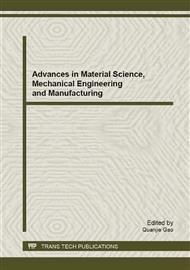p.366
p.370
p.375
p.379
p.383
p.388
p.392
p.396
p.400
The Analysis and Tests of Composite Leaf Spring for Trailer Truck
Abstract:
The composite leaf spring for trailer truck is developed with weight reduction 60% relative to steel spring, which can be benefit to environment protection and energy saving. In this work, the composite leaf spring is designed and analyzed by finite element method. Then the experimental tests are conducted on the composite leaf spring fabricated by the hot molding process. The spring rate and the maximum load capacity are measured, which have a good agreement with the design results.
Info:
Periodical:
Pages:
383-387
Citation:
Online since:
August 2013
Authors:
Price:
Сopyright:
© 2013 Trans Tech Publications Ltd. All Rights Reserved
Share:
Citation:


